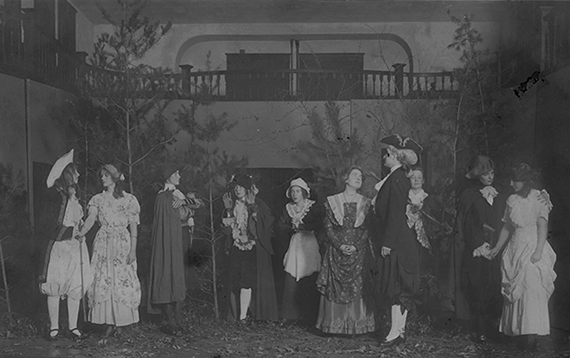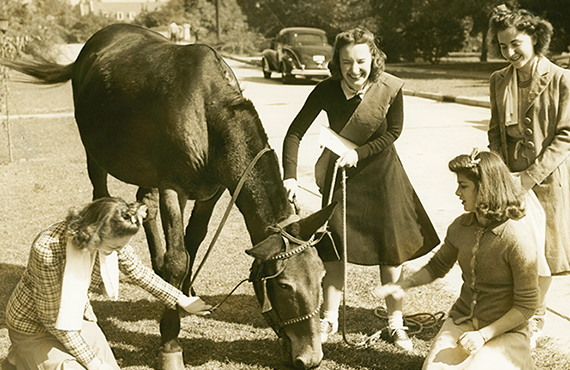Today, there are dozens of student groups to choose from on campus. But, back when The State Normal and Industrial School (now known as UNCG) was first founded, there was no such thing as campus organizations. That changed when President Charles McIver discovered a group of students had created their own sorority in secret.
Sororities had already been banned on campus, with McIver believing that they would lead to students feeling left out. McIver’s goal was to make sure all students could be included, emphasising his democratic approach to education. However, there were many who wanted a sorority-like group on campus. So McIver decided to create the Literary Societies.
He charged two students, Mary Arrington and Alice Green, with organizing these groups with the help of certain faculty members. They decided that the student body would be divided in half, each belonging to one of the societies. They were sorted at random, with names being drawn from a hat. Once the students had been grouped, they settled to finding a name. The group created by Arrington was named the Adelphian Society and the one by Green the Cornelian Society.
Each society created their own secret initiation rites and rituals, which were only known to the members of the group. For a while, even many of the officers were kept a secret. Despite the secret nature of the societies, they did come together in order to produce plays, debates, and simple luncheons, sometimes in honor of the other society. For the first 25 years they were on campus, they facilitated much of the activities outside of the classroom.
In 1918, the campus had grown to such a size that the two societies were becoming too large to function as they did before. A third society was chartered, with members being pulled from the already existing societies. They became the Dikean Society and adapted smoothly into campus life. A fourth, the Aletheians, was added in 1923. Both societies created their own rituals and secret initiations, and functioned much like the Cornelian and Adelphian societies.
By the 1930s, the influence of the societies has waned as other groups had taken shape on campus, such as the Student Government Association and the YWCA. They still held an important role as social groups and the election of marshals, a function they held until their disbandment.
As time went, the students began to group themselves more by class than by societies. Many felt that the societies had grown too large to continue to serve the campus effectively and participation had waned in favor of other groups. In 1953, after a vote was taken across campus in favor of disbandment, the presidents of all four groups formally agreed in a letter submitted to the university to bring the end of the societies.
Today’s post was written by Kristen Thomas, a senior history major. Kristen interned in Special Collections and University Archives during the Spring semester, and constructed both a physical and online exhibit (http://library.uncg.edu/collection/exhibits/Campus_Literary_Societies.aspx) on the history of campus literary societies. Here, she writes about the founding and activities of these organizations.

